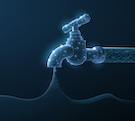Protecting Families: How Pipes Can Make or Break a Building
Learning Objectives:
- Describe the relationship between individual buildings and the wider landscape of piping infrastructure.
- Explain how emerging challenges make resiliency a key requirement for multifamily piping systems.
- List 4 ways that widely used materials impact the health of building occupants, the community, and the environment.
- Identify key building codes and their implications for specification of piping systems in multifamily construction, giving examples that illustrate how piping should be considered to ensure safety, resilience, and sustainability.
Credits:
This course is approved as a Structured Course
This course can be self-reported to the AANB, as per their CE Guidelines
Approved for structured learning
Approved for Core Learning
This course can be self-reported to the NLAA
Course may qualify for Learning Hours with NWTAA
Course eligible for OAA Learning Hours
This course is approved as a core course
This course can be self-reported for Learning Units to the Architectural Institute of British Columbia
Millions of piping systems bring clean water to children, parents and the elderly in urban and suburban buildings and residential communities throughout North America. They also carry away sewage and other waste, among other essential functions. Water and drain/waste/vent piping infrastructure must safeguard human health and safety, while also addressing sustainability and environmental concerns. Recent piping crises such as lead poisonings in Flint, Michigan, and benzene contamination in Santa Rosa, California, demonstrate that not all piping systems are created equal. This session will discuss the importance of piping infrastructure, review emerging challenges, reveal how piping impacts health and safety, and show examples in code and practice.

Photo courtesy of Safe Piping Coalition

|
Paul Hagar has worked in the Architecture, Engineering and Construction (AEC) industry for more than 20 years, including consulting with the piping industry, working on codes and standards, marketing and sales of residential and commercial products, and collaborating with architecture and interior design firms. He is passionate about finding practical and effective solutions for environmental challenges that benefit both people and planet. |













